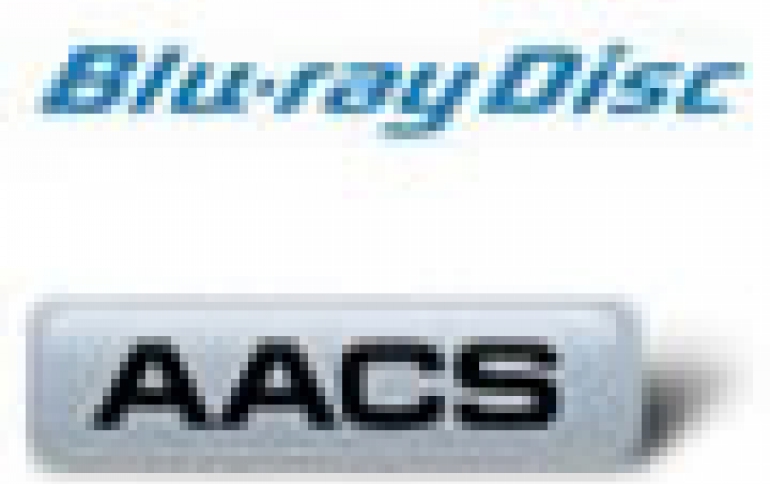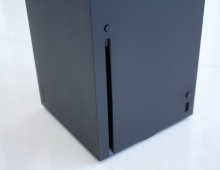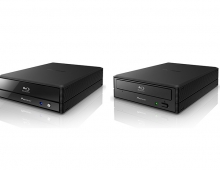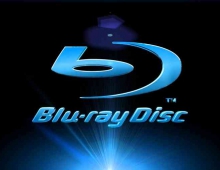
Final AACS Content Protection Specifications Include Managed Copy, Analog Sunset
The final version of the Advanced Access Content System license agreement for the DRM system used on Blu-ray Discs inlcude four basic features of AACS: Managed Copy, Digital Only Token Audio Watermark and analog susnset.
All the above elements of the AACS copy protection scheme for the Blu-ray disc where not essential parts of the "interim" AACS licensing agreement, on which all the Blu-ray players were based until now.
The final AACS licensing agreement was approved be AACS LA June 5. Since launching the Blu-ray format in 2006, companies had been operating under an interim AACS licensing agreement.
Managed Copy
Managed Copy is a basic feature of the final AACS specifications. It enables movement of content onto home network and portable devices.
The requirement that studios include managed copy on Blu-ray discs means that virtually all Blu-ray discs released after the first quarter of 2010 will offer consumers the ability to make one full-resolution backup copy.
We should note here that current generation of Blu-ray players and other BD devices don?t have the ability to make managed copies, and hardware suppliers aren?t expected to get new players out until the first or second quarter of 2010. Blu-ray hardware manufacturers are not required to support the managed copy function.
Managed copies can be made to recordable Blu-ray or DVD discs, as a download to a Windows Media DRM-compatible portable player or hard drive, on a memory stick, SD card.
Once a comnsumer chose to make a "managed" copy, the Blu-ray player connects online to an authorization center, run by a studio, supplier or the AACS-LA. The authorization center approves the process and allows consumers to proceed.
All studios that will sign the final AACS agreement (deadline in Dec. 4) are required to make all Blu-ray releases ready for managed copy.
For content owners, adding the managed copy feature only requires that they encode discs to include a URL directed either to a studio or supplier?s server authorization center or to an authorization center being run by the AACS-LA. By doing this, each disc will have a unique serial number so any copies will be easily tracked.
Digital Only token
Digital Only token will be utilized to enable new business models that are materially different from traditional video sell-through. For example, it will be used in "Day and date" releases of a disc and theatrical versions, or in HD preview content before generally available. The feature restricts content from flowing out of analog outputs, protecting content from piracy. If employed, the disc is required t be clearly labeled to avoid consumer confusion.
Content providers may assert the Digital Only Token only with respect to (a) Non-Consumer Products and/or (b) LCP Units Released in a given country within the first six (6) weeks after the first Theatrical Release of substantially similar Digital Entertainment Content in such country, provided that in the event of the circumstances set forth in this part (b), within six (6) months after such first Theatrical Release, Content Participant/Provider shall Release in such country LCP Units containing a version of such Licensed Content Product that does not assert the Digital Only Token.
Digital Only Token is not a mandatory for all the AACS Licensed Content Producer.
Image Constrain Token
Image Constrain Token (ICT) is a protection scheme applicable to analog outputs of a device. It provides a maximum resolution of 960x540 for legacy analog devices, which is superior to current DVDs but less than HD. The pre-recorded media (movies) that will support the ICT should have a clear indication on the disc when ICT used on the specific release. However, the ICT is employed at the option of the content owners, which means that not all the Hollywood releases will support it.
Audio Watermark
Audio Watermark will be also used at the discretion of content providers. An inaudible signal chosen by content providers will be inserted into the audio track of the content, and it will be invisible to authorized users. The devices will detect it and respond (revocation) to Watermark in pirated content. Any AACS licensed product Produced on or after December 31, 2010 shall be able to detect the Audio Watermark.
The AACS Authorized Audio Watermark technologies include AACS Content, WMDRM version 10 and higher (including PlayReady), Content Scramble System ("CSS") with AACS Signature, CPRM for Content Distribution, Fairplay version 1 and higher, Marlin Broadband Delivery System Specification and Marlin IPTV-ES Specification, Content Management Licensing Authority (CMLA) licensed implementations of Open Mobile Alliance (OMA) DRM 2.0 and above, Widevine Cypher version 4.2.0 and higher, ASCCT and DivX DRM, version 5 keyset #3.
Analog Sunset
Analog sunset describes the sunset of all analog outputs in devices. Any analog video outputs on the future Blu-ray players will be limited to SD Interlace Modes only (i.e., Composite, S-Video, 480i component), according to the final specifications of the Advanced Access Content System released by the AACS LA.
The Advanced Access Content System provides content protection for BD-ROM AV data. Until now, the specifications of the AACS protection system has been included in the so-called "interim" specifications books for pre-recorded and recordable Blu-ray discs.
According to the new 'AACS Final Adopter Agreement' documents, any licensed Blu-ray player manufactured after December 31, 2010 shall limit analog video outputs for Decrypted AACS Content to SD Interlace Modes only (i.e., composite video, s-video, 480i component video and 576i video).
In addition, analog video outputs will dissapear from any Blu-ray player after December 31, 2013, according to the AACS licensing agreement.
The "Analog Sunset" rules exclude the existing models.
The final AACS licensing agreement was approved be AACS LA June 5. Since launching the Blu-ray format in 2006, companies had been operating under an interim AACS licensing agreement.
Managed Copy
Managed Copy is a basic feature of the final AACS specifications. It enables movement of content onto home network and portable devices.
The requirement that studios include managed copy on Blu-ray discs means that virtually all Blu-ray discs released after the first quarter of 2010 will offer consumers the ability to make one full-resolution backup copy.
We should note here that current generation of Blu-ray players and other BD devices don?t have the ability to make managed copies, and hardware suppliers aren?t expected to get new players out until the first or second quarter of 2010. Blu-ray hardware manufacturers are not required to support the managed copy function.
Managed copies can be made to recordable Blu-ray or DVD discs, as a download to a Windows Media DRM-compatible portable player or hard drive, on a memory stick, SD card.
Once a comnsumer chose to make a "managed" copy, the Blu-ray player connects online to an authorization center, run by a studio, supplier or the AACS-LA. The authorization center approves the process and allows consumers to proceed.
All studios that will sign the final AACS agreement (deadline in Dec. 4) are required to make all Blu-ray releases ready for managed copy.
For content owners, adding the managed copy feature only requires that they encode discs to include a URL directed either to a studio or supplier?s server authorization center or to an authorization center being run by the AACS-LA. By doing this, each disc will have a unique serial number so any copies will be easily tracked.
Digital Only token
Digital Only token will be utilized to enable new business models that are materially different from traditional video sell-through. For example, it will be used in "Day and date" releases of a disc and theatrical versions, or in HD preview content before generally available. The feature restricts content from flowing out of analog outputs, protecting content from piracy. If employed, the disc is required t be clearly labeled to avoid consumer confusion.
Content providers may assert the Digital Only Token only with respect to (a) Non-Consumer Products and/or (b) LCP Units Released in a given country within the first six (6) weeks after the first Theatrical Release of substantially similar Digital Entertainment Content in such country, provided that in the event of the circumstances set forth in this part (b), within six (6) months after such first Theatrical Release, Content Participant/Provider shall Release in such country LCP Units containing a version of such Licensed Content Product that does not assert the Digital Only Token.
Digital Only Token is not a mandatory for all the AACS Licensed Content Producer.
Image Constrain Token
Image Constrain Token (ICT) is a protection scheme applicable to analog outputs of a device. It provides a maximum resolution of 960x540 for legacy analog devices, which is superior to current DVDs but less than HD. The pre-recorded media (movies) that will support the ICT should have a clear indication on the disc when ICT used on the specific release. However, the ICT is employed at the option of the content owners, which means that not all the Hollywood releases will support it.
Audio Watermark
Audio Watermark will be also used at the discretion of content providers. An inaudible signal chosen by content providers will be inserted into the audio track of the content, and it will be invisible to authorized users. The devices will detect it and respond (revocation) to Watermark in pirated content. Any AACS licensed product Produced on or after December 31, 2010 shall be able to detect the Audio Watermark.
The AACS Authorized Audio Watermark technologies include AACS Content, WMDRM version 10 and higher (including PlayReady), Content Scramble System ("CSS") with AACS Signature, CPRM for Content Distribution, Fairplay version 1 and higher, Marlin Broadband Delivery System Specification and Marlin IPTV-ES Specification, Content Management Licensing Authority (CMLA) licensed implementations of Open Mobile Alliance (OMA) DRM 2.0 and above, Widevine Cypher version 4.2.0 and higher, ASCCT and DivX DRM, version 5 keyset #3.
Analog Sunset
Analog sunset describes the sunset of all analog outputs in devices. Any analog video outputs on the future Blu-ray players will be limited to SD Interlace Modes only (i.e., Composite, S-Video, 480i component), according to the final specifications of the Advanced Access Content System released by the AACS LA.
The Advanced Access Content System provides content protection for BD-ROM AV data. Until now, the specifications of the AACS protection system has been included in the so-called "interim" specifications books for pre-recorded and recordable Blu-ray discs.
According to the new 'AACS Final Adopter Agreement' documents, any licensed Blu-ray player manufactured after December 31, 2010 shall limit analog video outputs for Decrypted AACS Content to SD Interlace Modes only (i.e., composite video, s-video, 480i component video and 576i video).
In addition, analog video outputs will dissapear from any Blu-ray player after December 31, 2013, according to the AACS licensing agreement.
The "Analog Sunset" rules exclude the existing models.





















